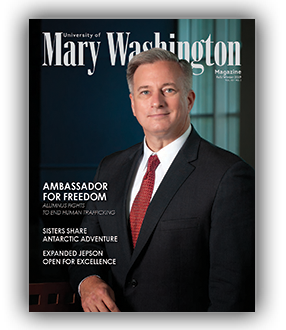Thanks to a partnership with the Smithsonian-Mason School of Conservation (SMSC), UMW students will soon be able to study the world’s most endangered species. They’ll spend a semester working directly with these animals and learning from Smithsonian scientists and George Mason University professors at the Smithsonian Conservation Biology Institute in Front Royal, Virginia.
The agreement comes just as UMW’s biology department introduces a major in conservation biology.
“We’ve always had a cadre of students who are passionate about conservation and sustainability,” said Professor Alan Griffith, who teaches conservation biology.
Starting in fall 2020, SMSC will make six of its 40 seats available to Mary Washington students, who will choose from such topics as biodiversity, animal behavior and reproduction, ecology, genetics, migration, and conservation sustainability. The interactive, hands-on courses will let students delve into field research, and the 16 credits they’ll earn will transfer seamlessly to UMW.
For the past several years, Mason has wanted to partner with UMW.
“Because of its strong emphasis on the liberal arts, Mary Washington is the type of environment that produces students that are perfect for our program,” said Cody Edwards, SMSC’s executive director and an associate provost at Mason.
While the National Zoo in Washington, D.C., is the public face of the Smithsonian Institution’s work
with animals and conservation, the Front Royal research facility houses a wide range of critically endangered mammals, birds, reptiles, and amphibians, including clouded leopards, red pandas, and Mongolian wild horses.
Having the chance to study in a new environment is an invaluable experience for UMW science majors, as they often miss out on study-abroad opportunities because their courses must be taken in sequence.
SMSC students work alongside leading scientists and policy practitioners – and they get private audiences with world-renowned conservationists the likes of revered British primatologist Jane Goodall.
With just one office for internships for the entire Smithsonian Institution and hundreds of thousands of applicants each year, “this program puts students at the front of the line,” Edwards added. “When you have the Smithsonian on your résumé, it opens a lot of doors.”


